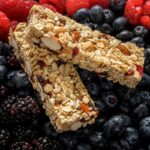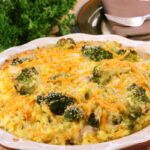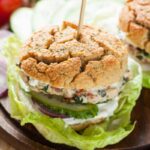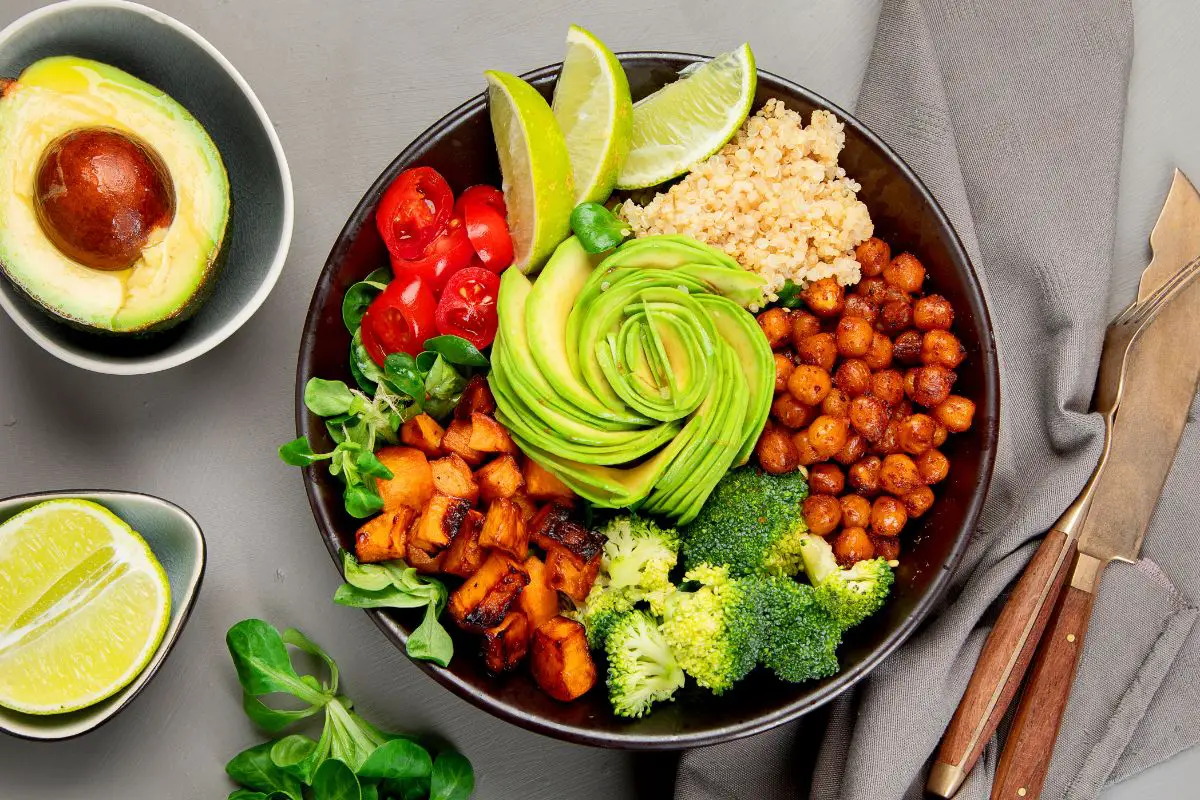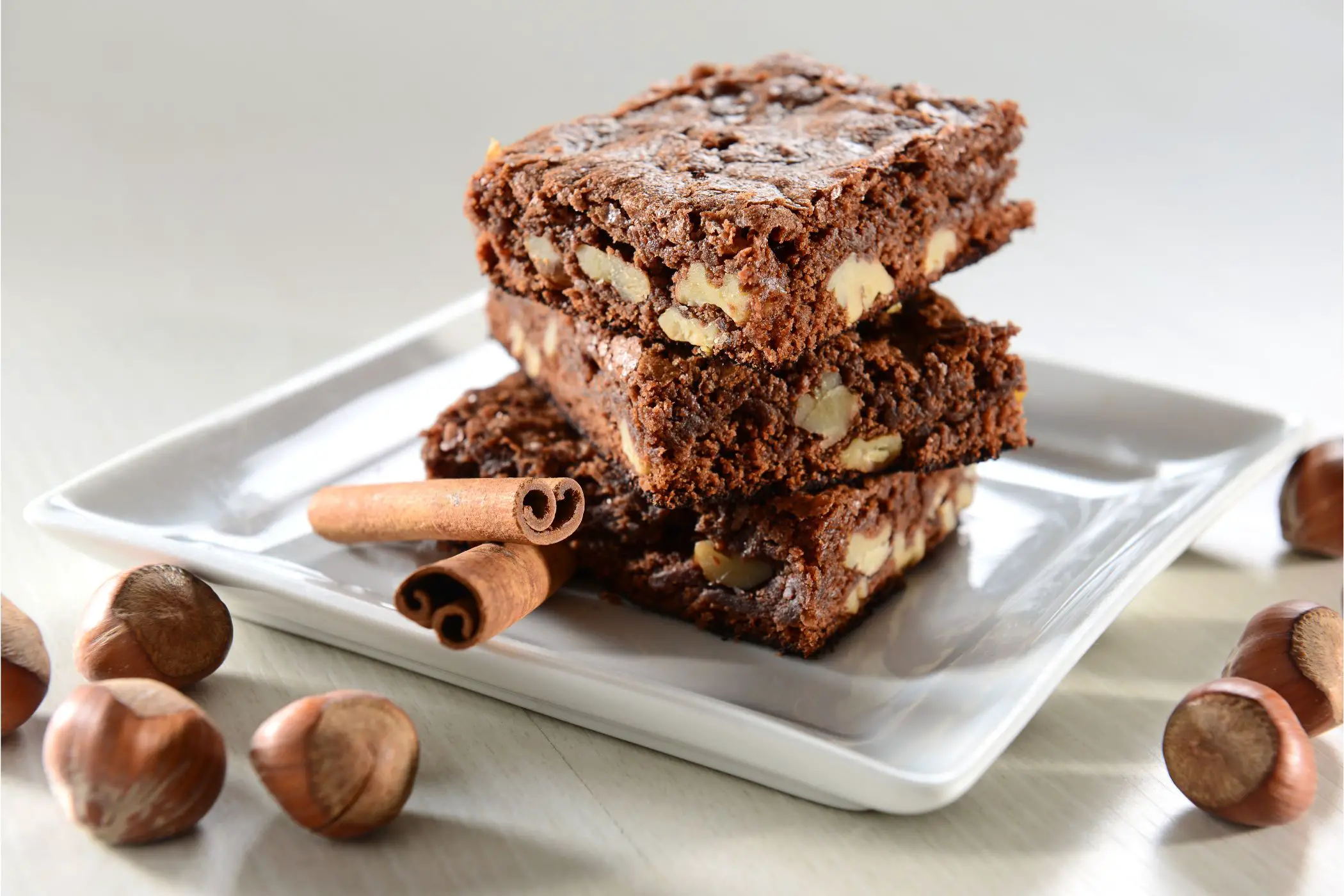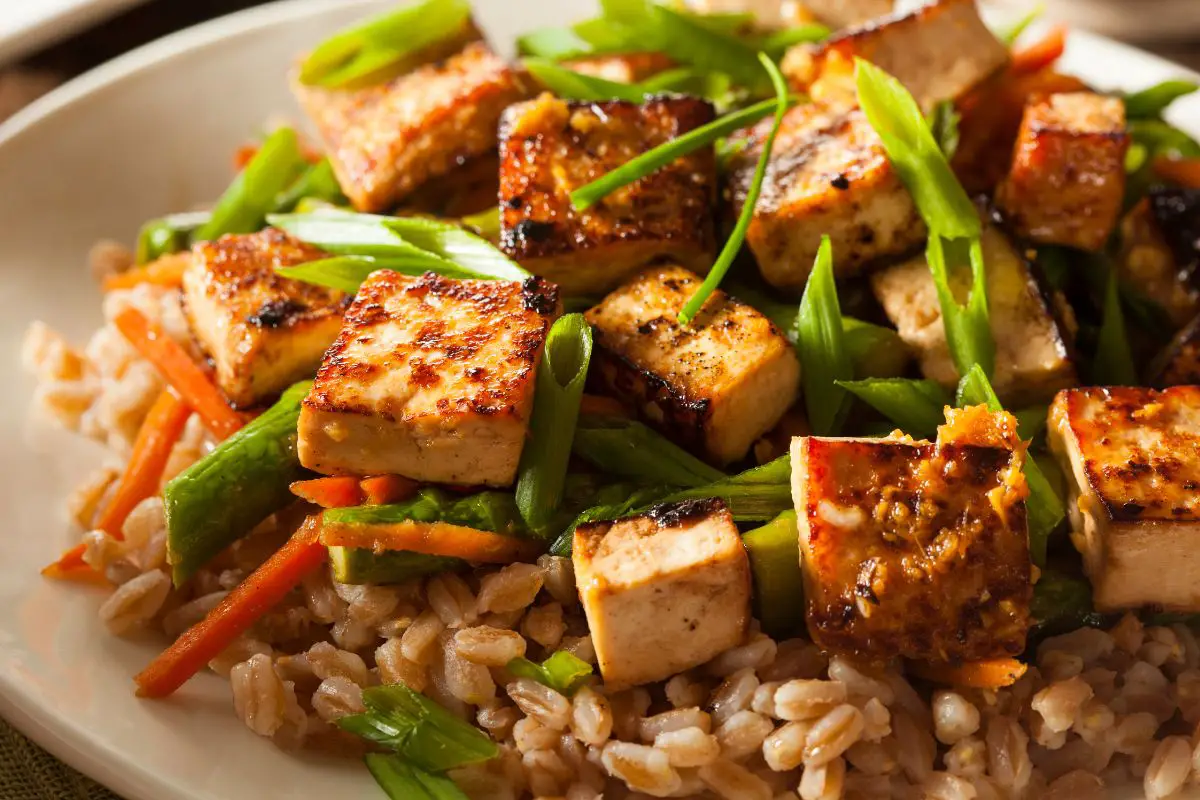Are you looking for tasty and gluten-free candy? If you want to avoid foods containing gluten, are Lifesavers a safe option?

Many of us enjoy the great taste of Lifesavers candy. Unfortunately, people with celiac disease or an intolerance to gluten must be very careful when choosing snacks to avoid any potential health risks.
Gluten is found in wheat, barley, and rye and is not suitable for those who are sensitive.
If you have gluten sensitivity and have been wondering if Lifesavers candies are safe for your diet, then this article will answer all your questions (to find out about other candy and gluten, read our guide to Starburst here)..
We’ll look at the ingredients used in making Lifesavers, what makes a product truly gluten-free, and provide alternative gluten-free options for those with dietary restrictions.
What Is Gluten?
Gluten is a protein found in wheat, barley, and rye. It is responsible for the elastic texture of dough and gives bread its chewy texture.
Gluten can also be found in many processed foods such as cereals, pasta, and baked goods. For people with celiac disease or gluten sensitivity, consuming even small amounts of gluten can cause serious health problems.
Fortunately, there are many gluten-free options available for those with dietary restrictions. These include fruits, vegetables, nuts, seeds, legumes, and some grains such as quinoa and buckwheat.
There are also a variety of gluten-free snacks on the market such as popcorn, chips, crackers, and candy.
What Issues Can Gluten Cause?
Consuming gluten can cause a range of issues for those with celiac disease or gluten sensitivity. These include:
Digestive Issues
Issues with digestion are one of the most common symptoms of gluten sensitivity. These can include abdominal pain, bloating, gas, and diarrhea.
Skin Issues
Gluten can also cause skin issues such as rashes, eczema, and hives.
Fatigue
Those with gluten sensitivity may also experience fatigue and difficulty concentrating due to the body’s inability to absorb nutrients properly.
Mood Changes
Mood changes such as depression and anxiety can also be caused by gluten sensitivity.
Common Sources Of Gluten
Gluten intolerances and allergies occur when the body is unable to properly digest gluten.
This can lead to a range of health issues, so it’s important to be aware of what foods contain gluten and avoid them if necessary.
Common sources of gluten include wheat, barley, rye, and oats. These grains are found in many processed foods, including bread, pasta, cereals, and baked goods.
Additionally, some condiments such as soy sauce and salad dressings may contain hidden sources of gluten, and this means that it is very important to read labels carefully when shopping for food – a mistake could result in a reaction, or worse (read more about food labels here).
What Are Lifesavers?
Lifesavers are a popular brand of hard candy that has been around since 1912. They come in a variety of flavors, including cherry, watermelon, and pineapple.
The original Lifesavers candy was created by Clarence Crane and is still produced today by the Wrigley Company.
A History Of Lifesavers Candy
Lifesavers candy was invented in 1912 by Clarence Crane, a Cleveland-based candy maker.
He created the iconic hard candy with a hole in the middle to make it easier to eat and prevent it from melting in hot weather.
The original flavors included peppermint, clove, and wintergreen.
Today, Lifesavers come in a variety of flavors including cherry, watermelon, pineapple, and raspberry, and are instantly recognizable thanks to their iconic ring shape and distinctive packaging.
Are Lifesavers Gluten-free?
The short answer is yes! All varieties of Lifesavers are gluten-free and safe for those with celiac disease or gluten sensitivity.
The ingredients used to make Lifesavers are sugar, corn syrup, citric acid, natural and artificial flavors, and colors. None of these ingredients contain gluten.
What Makes A Product Truly Gluten-free?
In order for a product to be considered truly gluten-free, it must meet certain standards set by the Food and Drug Administration (FDA).
According to the FDA, a product must contain less than 20 parts per million (ppm) of gluten to be labeled as gluten-free.
This means that a product must contain less than 0.002% of gluten in order for it to be considered safe for those with celiac disease or gluten sensitivity.

What Other Foods Are Gluten-Free?
Many other foods are gluten-free and safe for those with dietary restrictions. These include:
Fruits And Vegetables
Most fruits and vegetables are naturally gluten-free. This includes fresh, frozen, canned, and dried varieties.
Grains
Grains such as quinoa, buckwheat, millet, amaranth, sorghum, and wild rice are all gluten-free.
Nuts And Seeds
Nuts and seeds such as almonds, walnuts, cashews, sunflower seeds, and pumpkin seeds are all gluten-free.
Legumes
Legumes such as beans, lentils, and peas are also naturally gluten-free. These can be a great addition to meals such as salads, soups, and stews.
Gluten-Free Candy
In addition to Lifesavers, there are many other gluten-free candy options available, which are perfect for allowing individuals with dietary restrictions to enjoy a sweet treat without worrying about gluten.
Some of these include gummy bears, chocolate bars, and hard candy. Several candy brands are dedicated to ensuring that their goods are gluten-free, and some of the most popular brands include:
Just Born
Just Born is a popular candy brand that produces a variety of gluten-free products, including Mike and Ike, Hot Tamales, and Jelly Belly.
YumEarth
YumEarth is another great option for those looking for gluten-free candy. They offer a range of organic lollipops, gummy bears, and fruit snacks that are all certified gluten-free.
Tootsie Roll Industries
Tootsie Roll Industries is a well-known candy company that produces a variety of gluten-free products, including Tootsie Rolls, Tootsie Pops, and Junior Mints.
Ferrero Butterfingers
Though many candies in the Ferrero Butterfingers range contain gluten, their Butterfingers are perfect for those with dietary restrictions, as they are certified gluten-free.
Hershey’s Kisses
Hershey’s offers an impressive range of gluten-free options, though it is worth noting that the entire range is not gluten-free, so you may have to check carefully to ensure that the product you pick is safe for you.
MARS
As with Hershey’s, there are a number of products in the MARS range that are gluten-free, and these include M&M’s, Snickers, and Milky Ways.
Nestle
Though the entire Nestle range cannot be guaranteed as gluten-free, there are a growing number of products that fit the bill, including Baby Ruth, Bit-O-Honey, Raisinets, Laffty Taffy, and Wonka Pixy Stix.
What Are Lifesavers Candy Made From?
Lifesavers are free from gluten – but have you ever wondered just what else may be included in them?
Lifesavers are made from a combination of sugar, corn syrup, citric acid, natural and artificial
flavors, and food coloring. The original flavor of Lifesavers is orange, but they also come in a variety of other flavors such as cherry, watermelon, pineapple, raspberry, and grape.
Lifesavers are also available in sugar-free varieties, which are sweetened with a combination of aspartame and acesulfame potassium.
These sugar-free Lifesavers contain fewer calories than the original variety, making them a great option for those looking to reduce their sugar intake.
In addition to being gluten-free, Lifesavers are also free from dairy, eggs, and nuts, making them a great option for those with food allergies or dietary restrictions.
It is worth noting, however, that they do contain gelatin – this is a common ingredient in many gummy candies, and it is derived from animal sources.
Unfortunately, this means that Lifesavers are not suitable for vegans.
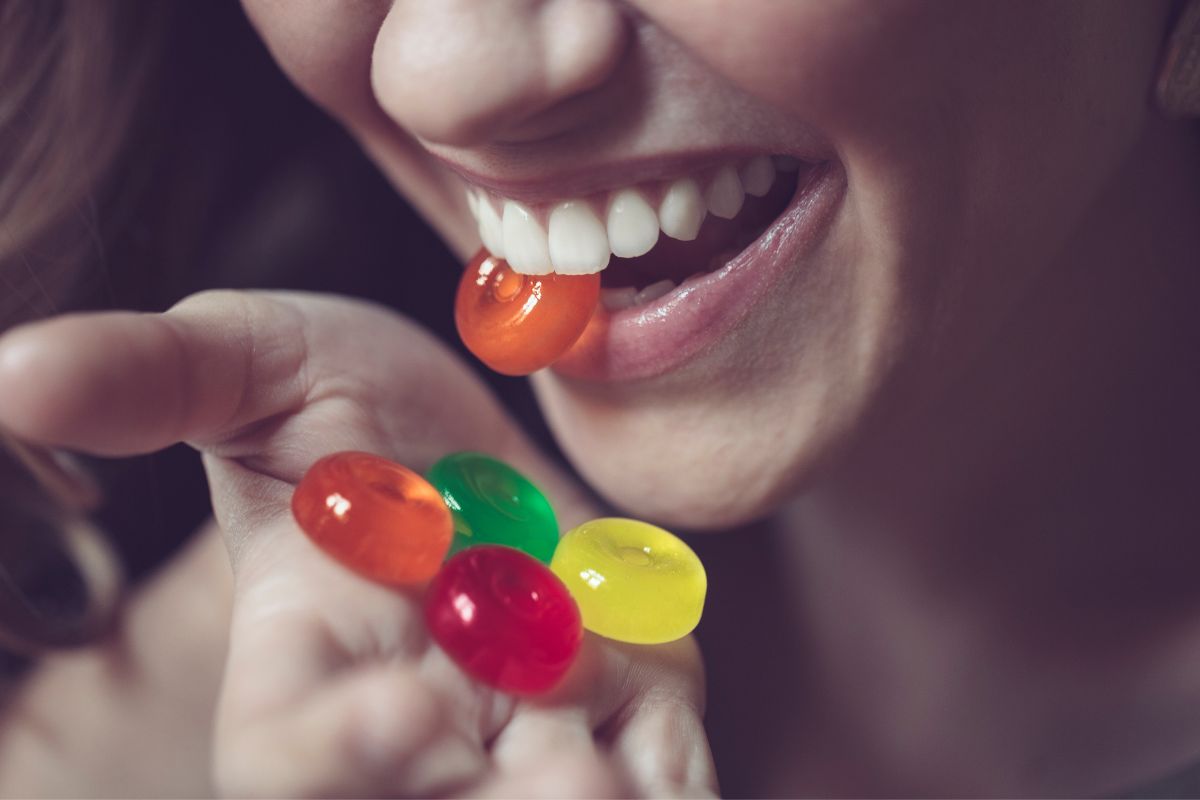
Types Of Lifesavers
Lifesavers come in a variety of shapes and sizes, and some of the most popular options include:
Original Lifesavers
Perhaps the best-known version of this sweet treat are the original Lifesavers, which come in a variety of flavors including orange, cherry, watermelon, pineapple, raspberry, and grape.
Lifesavers Gummies
These chewy treats come in a range of flavors such as strawberry, raspberry, blackberry, and tropical fruit. They are also available in sugar-free varieties.
Lifesavers Hard Candy
This version of Lifesavers comes in a variety of flavors, including cherry, watermelon, pineapple, raspberry, and grape.
Lifesavers Mints
These refreshing mints come in a variety of flavors such as peppermint, wintergreen, and spearmint. They are also available in sugar-free varieties.
How To Pick Gluten-Free Products
Making sure that a product is gluten-free is important for those with intolerances, and could be a very serious matter for those with an allergy or celiac disease.
When shopping for gluten-free products, it is important to read the label carefully.
Look for a “gluten-free” label or certification on the packaging, as this indicates that the product has been tested and verified to be free from gluten.
It is also important to check the ingredients list for any potential sources of gluten, such as wheat, barley, rye, and oats.
Types Of Gluten Intolerances
There are three main types of gluten intolerance: celiac disease, non-celiac gluten sensitivity, and wheat allergy.
Celiac Disease
Celiac disease is an autoimmune disorder that causes the body to react negatively when exposed to gluten.
People with this condition must follow a strict gluten-free diet in order to avoid symptoms such as abdominal pain, bloating, diarrhea, and fatigue.
Non-Celiac Gluten Sensitivity
This condition is similar to celiac disease, but it does not cause the same damage to the small intestine.
People with non-celiac gluten sensitivity may experience symptoms such as bloating, abdominal pain, and fatigue when exposed to gluten.
Wheat Allergy
A wheat allergy is an immune system reaction that occurs when a person is exposed to wheat proteins.
Symptoms of a wheat allergy can include hives, swelling, difficulty breathing, and anaphylaxis.
Signs That You Might Need To Avoid Gluten
If you experience any of the following symptoms after eating foods containing gluten, it is important to speak to your doctor about being tested for a gluten intolerance:
Abdominal Pain
Abdominal pain after eating is one of the most common signs of a gluten intolerance and tends to be caused by inflammation in the small intestine.
Bloating
Bloating is another common symptom and can be caused by inflammation in the digestive tract.
Fatigue
Gluten issues can also manifest as fatigue, and this is caused by the malabsorption of nutrients due to damage to the small intestine.
Digestive Issues
Digestive issues such as diarrhea, constipation, and gas can be caused by gluten intolerance, and these occur as a result of inflammation in the digestive tract, which can lead to the malabsorption of nutrients.
Headaches
Headaches can be caused by a gluten intolerance, and are often the result of inflammation in the digestive tract, which can result in malabsorption of nutrients.
Are There Any Treatments For A Gluten Intolerance Or Celiac Disease?
The only treatment for gluten intolerance or celiac disease is to follow a strict gluten-free diet. This means avoiding all foods that contain wheat, barley, rye, and oats.
It is important to read labels carefully when shopping for food, as many processed foods may contain hidden sources of gluten.
Additionally, it is important to be aware of cross-contamination in restaurants and other food establishments.
So, Are Lifesavers Gluten-free?
The answer to this question depends on the type of Lifesavers candy you are referring to. The original hard candy Lifesavers do not contain any gluten ingredients and are therefore considered gluten-free.
However, some of the newer varieties of Lifesavers, such as gummies and mints, may contain wheat or other sources of gluten.
It is important to read the label carefully when purchasing Lifesavers, as some varieties may contain gluten.
Additionally, it is important to be aware of cross-contamination in restaurants and other food establishments.
If you are unsure if a product contains gluten, it is best to contact the manufacturer for more information.
Remember that even if a product is labeled as gluten-free, it may still contain trace amounts of gluten.
This means that people with celiac disease or non-celiac gluten sensitivity should be extra cautious when consuming products labeled as gluten-free.
Additionally, it is important to remember that some medications and supplements may also contain gluten. If you are unsure if a medication
Final Thoughts
Are Lifesavers gluten-free? The answer is yes, most varieties of Lifesavers are gluten-free.
However, it is important to read the label carefully to make sure that there are no hidden sources of gluten in the ingredients list.
Additionally, it is important to be aware of cross-contamination in restaurants and other food establishments.
- How To Make A Paleo Detox Smoothie: Berry Cherry Green Edition - April 18, 2023
- How To Make Spicy Paleo Paprika And Thyme Veggie Fries - April 18, 2023
- 15 Mouthwatering Keto Apple Recipes You Need To Try Today - April 18, 2023

